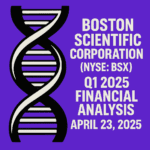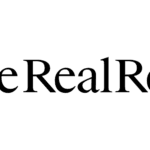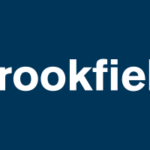Bruker Corporation (BRKR) Stock Analysis
Bruker Corporation (NASDAQ: BRKR) Stock Analysis
As of February 15, 2025
1. Company Overview
Bruker Corporation is a global leader in scientific instrumentation and solutions, serving academic, industrial, and government customers in diverse fields such as life sciences, pharmaceuticals, materials science, and clinical research. Founded in 1960, the company has built a reputation for delivering high-performance analytical systems—ranging from mass spectrometry and magnetic resonance instruments to electron microscopy tools—that enable advanced research and quality control applications.
Key Business Segments
1. Scientific Instruments
o Mass Spectrometry & Chromatography: Instruments used for identifying and quantifying molecules, essential in pharma R&D, proteomics, and clinical diagnostics.
o NMR, EPR, & MRI: Magnetic resonance systems for structural biology, materials science, and medical research.
o X-Ray & Electron Microscopy: High-resolution imaging and elemental analysis for materials characterization.
2. Life Science & Diagnostics
o Microbiology & Molecular Diagnostics: Tools for rapid pathogen identification, antibiotic resistance testing, and other clinical lab applications.
o Immunoassays & Reagents: Specialty reagents supporting clinical and life science workflows.
3. Nano & Semiconductor Solutions
o Atomic Force Microscopes & Stylus Profilers: Precise nanoscale imaging and measurement for materials research and semiconductor metrology.
o Semiconductor Inspection Tools: Systems ensuring wafer quality and process control in chip manufacturing.
4. Service & Consumables
o Aftermarket & Maintenance: Technical support, training, software upgrades, and spare parts.
o Consumables & Accessories: Items required for routine operation, extending Bruker’s recurring revenue streams.
Strategic Initiatives
- Innovation & R&D: Bruker invests significantly in research to advance instrument performance, expand product portfolios, and maintain competitive advantages.
- Acquisitions & Partnerships: The company pursues strategic M&A and collaborations to enter new markets, strengthen product offerings, and leverage complementary technologies.
- Operational Excellence: Ongoing efforts to optimize manufacturing processes, improve supply chain efficiency, and enhance customer support.
- Emerging Markets Expansion: Increasing presence in regions like Asia-Pacific and Latin America to capture growing demand for scientific instrumentation.
2. Financial Performance
a. Revenue and Growth
- TTM Revenue (as of Dec 31, 2024): $3.37 Billion
- YoY Revenue Growth (TTM): ~13.56%
Analysis
Bruker’s revenue reached $3.37 billion over the past 12 months, marking a robust YoY growth of over 13%. This expansion reflects increased demand for the company’s scientific instruments and service offerings across multiple end markets, though it has historically varied with macroeconomic and research funding cycles.
b. Profitability
- Net Income (TTM): $113.10 Million
- EPS (TTM): $0.76
- Profit Margin (TTM): 3.36%
- Return on Equity (ROE): 7.05%
- Return on Assets (ROA): 3.56%
- Return on Invested Capital (ROIC): 5.33%
Analysis
Bruker’s net income stands at $113.10 million, translating to a modest profit margin of 3.36%. While the company remains profitable, its margins and returns on capital are relatively lower than some industry peers, reflecting significant ongoing investments in R&D and the cyclical nature of instrument sales. Nevertheless, a positive ROE and ROA underscore the company’s ability to generate earnings from its equity base and assets.
c. Margins
- Gross Margin (TTM): 50.00%
- Operating Margin (TTM): 8.52%
- Profit Margin (TTM): 3.36%
Analysis
Bruker’s gross margin of 50% highlights solid pricing power and cost management within its product lines. However, operating and net margins are narrower, partly due to substantial SG&A and R&D expenses essential for maintaining competitive, high-performance instrument offerings.
d. Cash Flow
- Operating Cash Flow (TTM): $251.20 Million
- Capital Expenditures (TTM): -$117.40 Million
- Free Cash Flow (TTM): $133.80 Million
- FCF Per Share (TTM): $0.88
Analysis
Bruker’s operating cash flow of $251.20 million provides the resources for capital investments and strategic acquisitions. After capital expenditures, free cash flow sits at $133.80 million, supporting dividend payments and potential share repurchases. The company’s cash flow profile reflects moderate reinvestment needs to sustain innovation and operational improvements.
3. Balance Sheet
- Total Assets: $5.81 Billion
- Total Liabilities: $3.99 Billion
- Shareholders’ Equity: $1.82 Billion
- Total Debt: $2.09 Billion
- Cash & Equivalents: $183.40 Million
- Net Cash (Debt): -$1.91 Billion
- Debt-to-Equity Ratio: 1.15
- Current Ratio: 1.60
- Quick Ratio: 0.58
- Working Capital: $773.70 Million
Analysis
Bruker’s balance sheet shows shareholders’ equity of $1.82 billion and total debt of $2.09 billion, resulting in a debt-to-equity ratio of 1.15. The company holds $183.40 million in cash, but net debt remains significant at -$1.91 billion. A current ratio of 1.60 suggests comfortable short-term liquidity, while a quick ratio of 0.58 indicates reliance on inventory turnover to meet immediate obligations. Overall, the leverage level is notable but not uncommon for capital-intensive technology and manufacturing firms.
4. Valuation
- Current Stock Price (as of Feb 14, 2025): $50.04
- Market Capitalization: $7.59 Billion
- PE (TTM): 65.92
- Forward PE: 18.68
- Price-to-Sales (TTM): 2.21
- Price-to-Book (TTM): 4.22
- P/FCF (TTM): 56.70
- PEG Ratio: 1.60
- EV/EBITDA (TTM): 20.18
- EV/Sales (TTM): 2.82
Analysis
Bruker trades at a relatively high trailing PE of nearly 66, largely reflecting lower net income over the past year. The forward PE of around 19 suggests market optimism about improved earnings. The PEG ratio near 1.60 indicates a moderate alignment between valuation and expected growth. With an EV/EBITDA ratio above 20, the company commands a premium typical of specialized scientific instrument providers. Nonetheless, investors should monitor whether expected earnings growth materializes to justify these multiples.
5. Market Performance
- 52-Week Range: $48.07 – $94.86
- 52-Week Price Change: -34.84%
- Beta (5Y): 1.16
Analysis
Bruker’s share price has declined by over 30% in the past year, underperforming broader indices. This drop may reflect macro uncertainties, cautious research spending, or heightened competition in key product areas. A beta near 1.16 implies the stock’s volatility slightly exceeds the market average, suggesting Bruker’s share price can be sensitive to broader market shifts and sector-specific sentiment.
6. Financial Health and Risks
a. Liquidity & Leverage
- Current Ratio: 1.60
- Quick Ratio: 0.58
- Debt/Equity: 1.15
Bruker’s current ratio indicates it can cover short-term liabilities with current assets, but the lower quick ratio points to reliance on inventory to fulfill obligations. Debt leverage is notable, though not excessively high for a capital-intensive instrumentation firm.
b. Profitability & Cash Flow
- Profit Margin: 3.36%
- Free Cash Flow: $133.80 Million
While margins are modest, free cash flow is positive, supporting ongoing investments in R&D, strategic acquisitions, and shareholder returns (including a modest dividend).
c. Operational & Market Risks
- Research Funding Cycles: Dependence on academic and government funding can lead to revenue fluctuations if research budgets contract.
- Technological Competition: Rivals in high-end instrumentation continually innovate, necessitating substantial R&D to maintain differentiation.
- Global Economic Factors: Currency fluctuations, trade policies, and supply chain disruptions can impact Bruker’s operations and costs.
d. Regulatory & External Risks
- Regulatory Approvals: Some Bruker products, especially in clinical diagnostics, require regulatory clearance. Delays or rejections can hinder growth.
- Geopolitical Tensions: Tariffs or export restrictions on high-tech equipment can influence Bruker’s sales and supply chain strategies.
7. Conclusion
Pros
1. Steady Revenue Growth: Over 13% YoY increase in revenue, driven by demand for advanced scientific instruments.
2. Strong Market Position: Renowned brand and technology leadership in niche instrumentation and diagnostic solutions.
3. Healthy Cash Flow: Positive free cash flow of $133.80 million supports R&D, debt management, and shareholder distributions.
4. Diverse End Markets: Broad customer base spanning academia, pharma, and industry reduces single-market reliance.
5. Competitive Dividend: A $0.20 annual dividend (0.40% yield) with a manageable payout ratio around 26%.
Cons
1. High Valuation Multiples: A trailing PE near 66 and a P/FCF over 50 may require strong earnings acceleration to justify.
2. Modest Profit Margins: Net margin at 3.36% leaves less buffer against cost pressures or economic downturns.
3. Significant Leverage: Net debt surpasses $1.9 billion, elevating financial risk if cash flows weaken.
4. Market Volatility: A 52-week price drop of ~35% underscores vulnerability to macro and sector headwinds.
5. Inventory Reliance: Quick ratio of 0.58 indicates Bruker must efficiently manage inventory and supply chains to meet short-term obligations.
Final Note
Bruker Corporation occupies a specialized position in the scientific instrumentation market, benefiting from robust R&D, strong brand recognition, and diverse end markets. Despite facing relatively low net margins and a higher debt load, the company’s positive free cash flow and strategic focus on innovation may position it for continued growth. Investors should balance the stock’s elevated valuation against the potential for rising earnings in the coming quarters, while monitoring research spending trends, currency risks, and ongoing competition in high-end analytical solutions.
Disclaimer
This analysis is for informational purposes only and does not constitute investment advice or a recommendation. Investing involves risks, including loss of principal. Past performance is not indicative of future results. Investors should perform their own due diligence or consult a qualified financial advisor before making any investment decisions.






